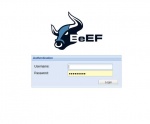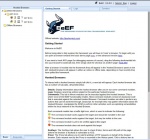BeEF
Summary
Browser Exploitation Framework (BeEF) allows the user to start client-side-attacks, assess the security of the browser and the possible effects on the network to be tested.
Requirements
As part of this guide, I used Kali (Kali GNU/Linux Rolling 5.10.0-kali3-amd64) as the OS, so it was already preinstalled. I installed Kali on a Virtual machine (VMware® Workstation 15 Pro 15.5.5 build-16285975).
Example
For example, we only have just the domain information of the target system. And we would like to know more about this system, like name server, etc.
Let's use fh-campuswien.ac.at as our example domain:
Start: Open the BeEF service and authenticate
After the beef service has started, you have to log into the service. Default credentials are 'beef' for username and 'beef' for the password.
Hook Target Browser
For practicing purposes BeEF provides a localhost webpage.
To see the details of hooked Browser
If you click on the hooked browser, under "Details" you can see information about the browser.
Command execution in the Browser
There are hundreds of modules under "Commands", which include from social engineering to browser hacks. The desired module can be selected by clicking and executed with the "Execute" button at the bottom right. I choosed the "Google Phishing" module under the "Social Engineering" Folder and clicked to "Execute".
Courses
- WFP-1



